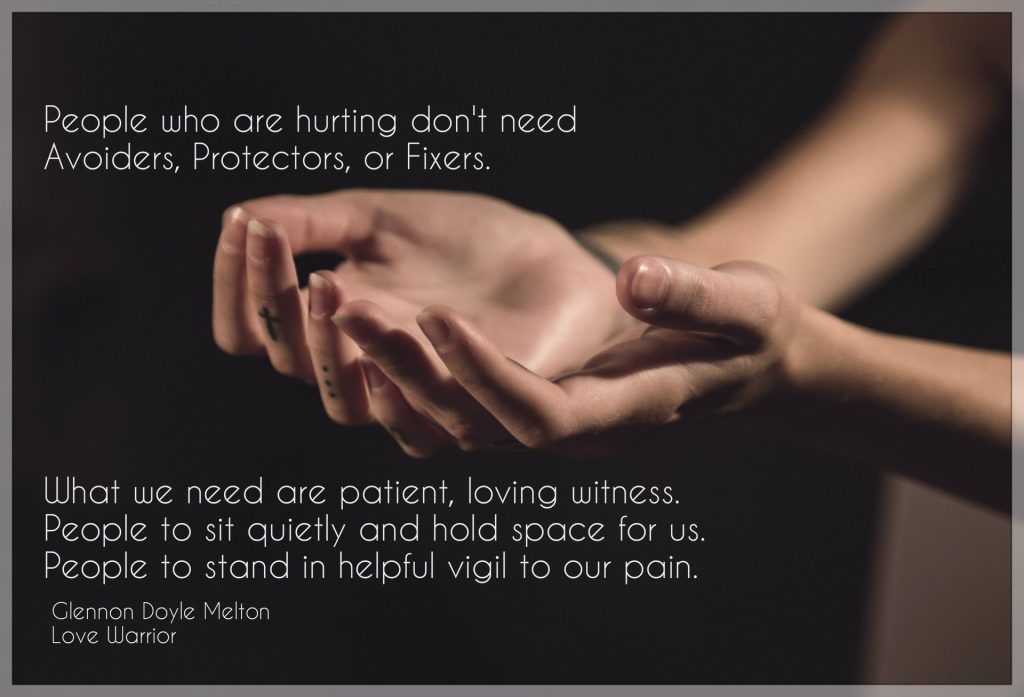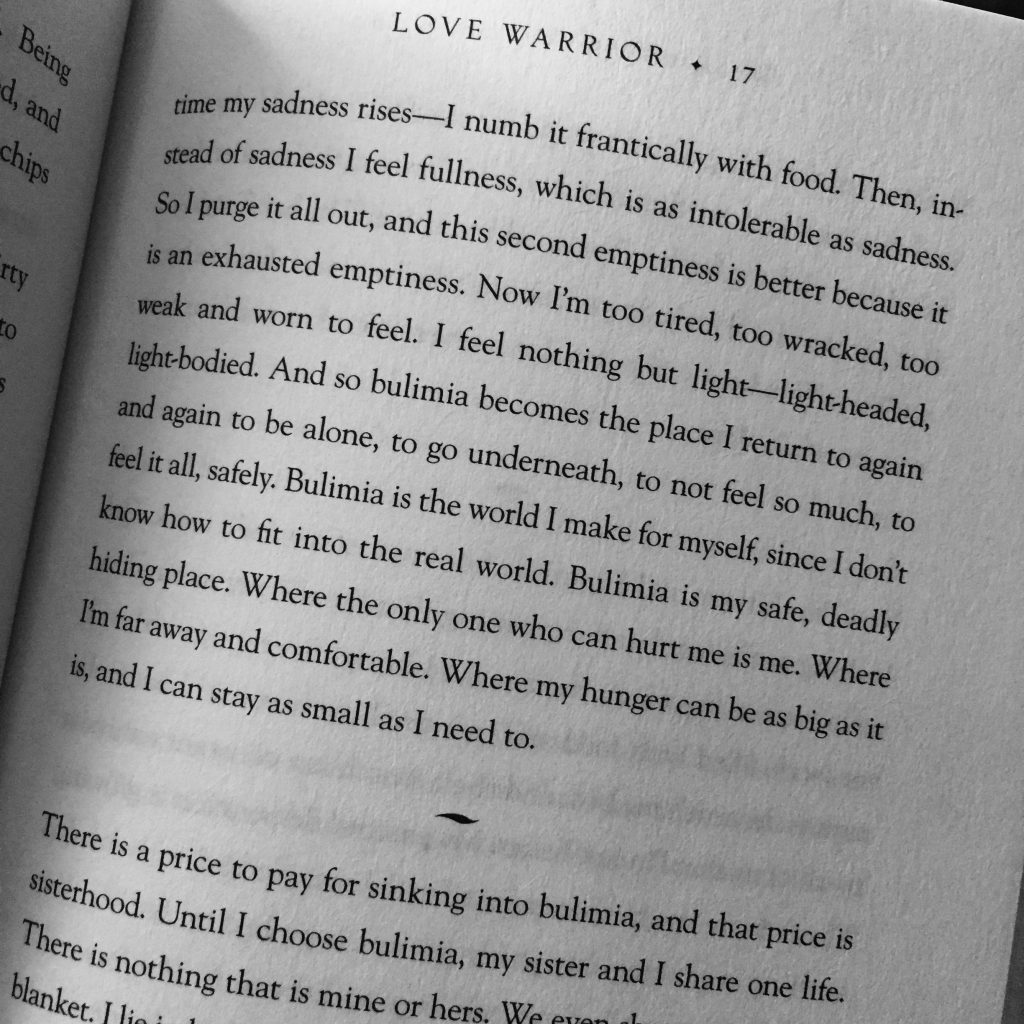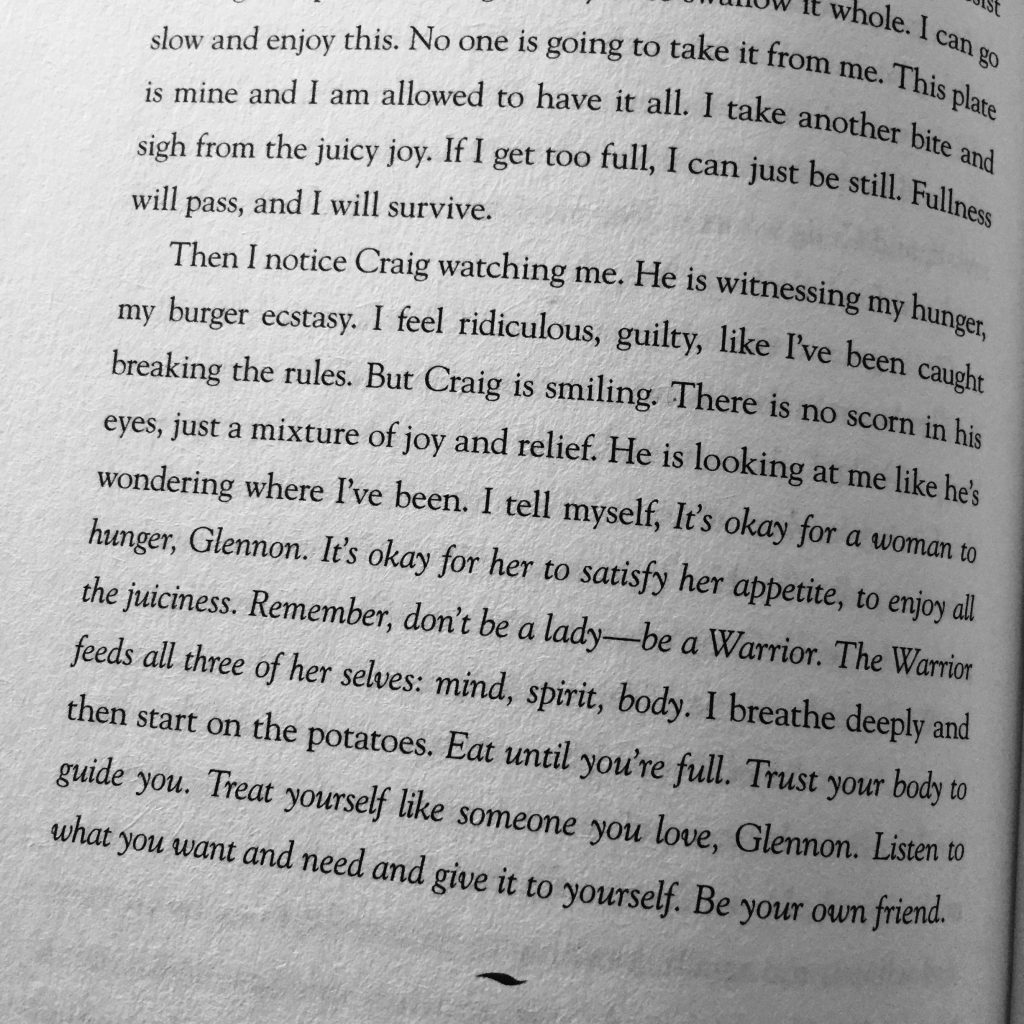It’s lonely to have an eating disorder.
Or maybe, people have an eating disorder because they have a loneliness.
Or maybe both.
I remember the winter that First Husband was thinking he would leave…but had not yet left. I was in such turmoil, I would forget to eat.
Sometimes, I was so worried about what was happening that my stomach felt chronically butterfly-ish…except these were ginormous butterflies whose wings hammered at my insides. If I didn’t eat and was hungry enough, all I would feel was hunger…and the hunger hurt less than hammering wings. The hunger, oddly enough, soothed me.
Sometimes, the choice to be in pain from the hunger felt good–because I was doing the hurting. Pain is confusing…and sometimes feeling pain feels so wrong, that it makes sense to impose more pain. It’s a twisted form of self harm. Hey, I’m not saying this makes sense…I’m just saying it’s for real.
Other times, I saw the world was continuing on, even as my world was falling apart. I had to keep moving, keep parenting, keep working, keep smiling. As I look back on it, my dropping weight was a way to point out what was so obvious to me…and yet so hidden to everyone else: I was not OK.
And as my weight dropped, I could see that in a world where my husband might leave, my world would fall apart, and I would be alone in raising my children–that my weight was something that only I affect. In a world that felt out of control, I could control my weight. A small, but necessary compensation.
I watched the weight drop…I remember looking at myself with fascination, in a detached sort of way. I had carried extra pounds for years, and now I was well below the weight I was in high school. The weight fell off. I’d never successfully lost weight with exercise and diet…and now the weird world I found myself in, made hunger a comfort.
I’d worked with folks with dysregulated eating–I knew the dangers, and I knew the signs. I knew certain lines to not cross because you can’t unring the bell. I knew the dangers that existed. I knew 97% of women hate their body daily…and so losing enough weight as a tool to feel good about myself wasn’t realistic.
I also knew that I wouldn’t find safety in endless hunger, or satisfaction in ever more protruding collar bones. I knew that the root of an eating disorder wasn’t, ironically enough, eating.
The root of an eating disorder is disconnection.

I knew that the route out of dysregulated eating was connection. We are wired for connection, and the route to healing numbing behavior was to find my value in relationships. It was a frantically busy time, and I was exhausted…but I knew what the literature and what my friends said about taking care of myself. I didn’t focus on my weight, I invested in relationship:
At that time, I made a commitment, despite the craziness of my schedule to visit with Mary one morning per week before week. We still meet weekly, 11 years later.
In the holes of time I could find, I went running with a couple of friends, where we would chat. Not about my poor eating, but about kids and life and movies and books and the latest news. We would talk and laugh and cry about the nonsense of life.
I went to church. I remembered the One who has always been, never changes, and created me strong and vulnerable. I sang with others whose voices surrounded me with musical courage, and prayed with others who could lift up hope when I couldn’t.
I saw a therapist who encouraged me to see me for me, to see others for who they were, to draw boundaries that would create healthy relationships.
I played with my Junior Tribe Members.
I worked with clients. We connected profoundly and deeply as they showed me the courage to risk connecting with me, to tell me their stories. They trusted me when so much in their histories told them to stay silent. And as they gained insights, they showed up in their lives by trying online dating, asking a spouse to go for counselling with them, applying for the job, having hard conversations with a co-worker.
My clients showed me that the route to healing is by taking some crazy leap to trust your own value enough to invest in relationships. To believe that others really do want to know the real you.
My clients showed me that painful feelings don’t kill you, they just hurt. And if you sit with them long enough to understand them and even, maybe, be kind to them, they move on.
My clients showed me that there was hope in dark times. We laughed in the pit of their hopelessness–deep, honest belly laughs of those who have faced terror down and lived to breath again.
Husbands and wives took gentle care to express the hidden longing to love, but the very surface fear of rejection. Individual clients saw a part of themselves they had long orphaned long for compassion and they extended care to themselves. To witness such gentle connection and reconnection creates a one’s own soul hunger for connection.
And gradually this soul hunger turned into a body hunger that felt right. Gradually, the fear subsided to the point that hunger no longer needed to overpower it. Gradually, the joy of living meant celebrating with food and laughter and love.
And gradually, the pounds came back on to a healthier level. Gradually, I was hungry at mealtime and it made sense to eat.
I didn’t get better because of looking at the food, by talking about the food, by weighing myself. I got better because of connection.
I came close, but likely never met the criteria for Anorexia Nervosa. But it’s fair to say that I have a compassion at a deeper level than I did before the winter of horror happened.
The disordered eating is a problem, to be sure, when medical issues occur.
The much greater issues of eating disorders are the fear of discovery, the secrets, the compelling urge to hide, the agony of self-loathing, the unsuccessful drive for perfection and the discouragement of working terribly hard to feel better and feeling worse than ever.
In our offices, we work with folks (often, but not nearly always women) who long to figure out the sh*t behind the food stuff. To see the hopelessly painful logic of dysregulated eating:

And also in our offices, we celebrate victories with the clients who work to have a different relationship with themselves and with others…that can, over time, transform their relationship with food. I read Glennon Doyle Melton’s best selling book, Love Warrior this week and read this gem:

So…all of this to explain the basket in the waiting room.
To show we care…to ponder and think on the connections that we all need and struggle for, we are collaborating with the National Initiative for Eating Disorders. We want to participate in raising awareness for Eating Disorders and for those struggling with Eating Disorders. The basket of purple yard and knitting needles is ready to go…Maryann Friesen casted on for us!
Yesterday, as I sat in the waiting room contributing a row to the scarf, I thought about the scared and lonely folks who watch themselves struggle with their bodies, with food, with self-hatred. I know there is a struggle to find adequate resources with an intensity that can break through the crusty shell of the disorder, and be affordable to those who need the help. Family members live in terror at the ultimate and very real possible outcome of and Eating Disorder: death.
Perhaps, in knitting a row in the waiting room, the smallest connection is made to say,
“I see you. I see your loneliness and your pain. I see your need for warmth and understanding. I see you need connection. I see you. And I knit because I want to be part of the world’s warmth to you.”
The thing of it is this: those that knit are not perfect people living perfect lives in a perfect way at a perfect weight. We also struggle. Some will knit in a state of anxiety, after restless nights and a fearsome day. Some will struggle to knit after yet another long week of struggle in a difficult marriage or overwhelmed in parenting a child. Others will knit because to do something other than think of their lives will be the only way to get through those terrifying moments in the waiting room. Before the fiercely challenging and remarkably life giving reality that is the truth telling of therapy.
As the knitting needle goes inside one loop to gather the yarn to create a another loop, we recognize that the scarf reminds us how we are all connected. Each of us struggles in a unique way that matters.
We knit, knowing the scarf comes to be when the multitude of loops work together, connected.
We knit, because scarves signify connection and warmth. They symbolize caring, and the desire to protect another from the harsh elements of life.
We knit because we care.






1 Comment
I can relate somewhat to this. When my first husband left me and the two kids, I felt I couldn’t eat. I already felt sick but if I ate something, I felt worse. He had said he hates fat people and has no use for them. Maybe not eating was a form of self harm, I don’t know.
But now, I seem to eat when I’m happy or sad!
It is a “comfort” thing I believe.
Thank you for sharing this.
Write a Comment
Categories